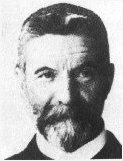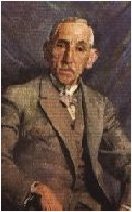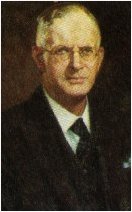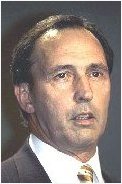AUSTRALIA
TODAY
Today's Political Structure
| Australian
Prime Ministers | Australian Governor Generals
Today's
Political Structure
Australia and its birth within Britain's Commonwealth has naturally brought
an English system of Government. As noted previously, the early days of the
colony tended towards a socialism born out of necessity. The class barrier of
convict/overseer has made Australia a nation peculiar in its political development.
The
employer/employee relationship that has always existed since convict days has
made industrial relations and income taxation in Australia high on the agenda
and it is a continuing issue that confronts all Australian Governments. The
counter balanced views on the these central subjects plus issues like public
education and publuc health are interwoven in the political fabric and provide
insight into the issues that separate the "representatives of the people".
This representation is symbolised by the two existing parties that are popular
in Australia today. The Liberal Party of Australia is Australia's conservative
party (basically represents employers, corporate management's and small business).
While the Australian Labor Party, naturally, and this goes back to early convict
days has been the favoured party for unionists, workers and social reformers.
The first ever Labor Party elected federally anywhere in the world came to be
on the 7th April 1904 when John Watson's Federal Labor Party took office after
being elected in the March of that year.
The
Australian Political System (Federation 1901) is a three-tier system of government
that is structured as follows,
- a
Federal Government (National),
- a
State Governments (Provincial),
- and
a Local Government (shire and municipal Councils).
All based in the Westminster tradition and characterised by the separation or
(triangulation) of powers which administer government and law at the national
and provincial level and under the provisions laid down in the Constitution.
The
"three" arms of the Westminster Sytem that provide the separation of powers
are:
The
Executive
- the Governor General
The
Legislature
- (the House of Representatives and the Senate)
The
Judiciary
- The High Court of Australia
The
Executive and Judiciary
are responsible for matters specifically relevant to the States and Territories
of Australia. The Legislature is required to be elected by compulsory
vote by the Australian people (18+) every 4 year period. The elected party forms
a Government to administer the affairs of the day. The elected members from
the defeated party form an "Opposition" or "Shadow Government" to
support or deny the passing of legislation through the Upper and Lower
Houses of the Legislature.
The
powers of the Federal Parliament are laid down in a written Constitution. State
Parliaments are subject to the provisions of this as well as their own. The
constitution can only be changed by referendum ( a "yes or no" vote by the people
on an issue). Referendums can only be initiated by unanimous approval in both
Upper and Lower Houses of federal Parliament.
State
Governments are also made up of a Executive, *Legislature and Judiciary and
are responsible for their own State Administrations only.*Queensland
abolished Upper House in 1922
Close
to 900 Local Government bodies administer locally at the city, town, municipal
and shire level and are subject to the statutes and regulations of the Federal
and State Authorities. Local governments are legislated by State Governments.
Try
these links
Federal
Sources
State
Legislatures
*BACK
TO TOP*
AUSTRALIAN
PRIME MINISTERS
- Sir
Edmund Barton (Protectionist Party) 1 January 1901 - 24 September
1903
- Alfred
Deakin (Protectionist Party) 24 September 1903 - 27 April 1904
- John
Christian Watson (Australian Labor Party) 7 April 1904 - 17 August
1904
- George
Houstoun Reid (Free Trade) 18 August 1904 - 5 July 1905
- Alfred
Deakin (Protectionist Party) 5 July 1905 - 13 November 1908
- Andrew
Fisher (ALP) 13 November 1908 - 2 June 1909
- Alfred
Deakin (Protectionist Party) 2 June 1909 - 29 April 1910
- Andrew
Fisher (ALP) 29 April 1910 - 24 June 1913
- Joseph
Cook (Liberal Party of Australia) 24 June 1913 - 17 September 1914
- Andrew
Fisher (ALP) 17 September 1914 - 27 October 1915
- William
Morris Hughes (ALP/Nationalist Party from 1917) 27 October 1915 -
9 February 1923
- Stanley
Melbourne Bruce (Nationalist Party ) 9 February 1923 - 22 October
1929
- James
Henry Scullin (ALP) 22 October 1929 - 6 January 1932
- Joseph
Aloysius Lyons (United Australia Party) 5 January 1932 - 7 April
1939
- Sir
Earle Christmas Grafton Page (Australian Country Party) 7 April 1939
- 26 April 1939
- Robert
Gordon Menzies (United Australia Party) 26 April 1939 - 29 August
1941
- Arthur
William Fadden (Australian Country Party) 29 August 1941 - 7 October
1941
- John
Curtin (ALP) 7 October 1941 - 5 July 1945
- Francis
Michael Forde (ALP) 6 July 1945 - 13 July 1945
- Joseph
Benedict Chifley (ALP) 13 July 1945 - 19 December 1949
- Robert
Gordon Menzies (Liberal Party of Australia) 19 December 1949 - 26
January 1966
- Harold
Edward Holt (LP) 26 January 1966 - 19 December 1967
- John
McEwen (Australian Country Party) 19 December 1967 - 10 January 1968
- John
Grey Gorton (LP) 10 January 1968 - 10 March 1971
- William
McMahon (LP) 10 March 1971 - 5 December 1972
- Edward
Gough Whitlam (ALP) 5 December 1972 - 11 November 1975
- John
Malcolm Fraser (LP) 11 November 1975 - 11 March 1983
- Robert
James Lee Hawke (ALP) 11 March 1983 - 20 December 1991
- Paul
John Keating (ALP) 20 December 1991 - 11 March 1996
- John
Winston Howard (LP) 11 March 1996 -
| |
PRIME
MINISTERS OF AUSTRALIA
|
|
| |

Edmund
Barton
(First
Prime Minister)
|
|

John
Watson
|

Alfred
Deakin
(Three
time Prime Minister)
|

Andrew
Fisher
|

William
Hughes
(Nationalist)
|

Robert
Menzies
(Statesman)
|

John
Curtin
(Wartime
Woes)
|

Bob
Hawke
(Popularist Leader)
|

Gough
Whitlam
(Reformer)
|

Paul
Keating (Economy
and Asia)
|
*BACK TO TOP*
AUSTRALIAN
GOVERNOR-GENERALS
- Rt
Hon. John Adrian Louis Hope, 7th
Earl of Hopetoun, 1 Jan 1901 - 9 Jan 1903
- Rt
Hon. Hallam Tennyson, 2nd Baron Tennyson, (Acting Governor-General),17
Jul 1902 - 9 Jan 1903
- Rt
Hon. Hallam Tennyson, 2nd Baron Tennyson, 9 Jan 1903 - 21 Jan 1904
- Rt
Hon. Henry Stafford Northcote, 1st Baron Northcote, 21 Jan 1904 -
9 Sep 1908
- Rt
Hon. William Humble Ward, 2nd Earl of Dudley, 9 Sep 1908 - 31 Jul
1911
- Rt
Hon. Thomas Denman, 3rd Baron Denman, 31 Jul 1911 - 18 May 1914
- Rt
Hon. Sir Ronald Craufurd Munro-Ferguson, 18 May 1914 - 6 Oct 1920
- Rt
Hon. Henry William Forster, 1st Baron Forster, 6 Oct 1920 - 8 Oct
1925
- Rt
Hon. John Lawrence Baird, 1st Baron Stonehaven, 8 Oct 1925 - 22 Jan
1931
- Rt
Hon. Sir Isaac Alfred Isaacs, 22 Jan 1931 - 22 Jan 1936
- HRH
Prince Henry William Frederick Albert, Duke of Gloucester, Earl of
Ulster, 30 Jan 1945 - 11 Mar 1947
- Rt
Hon. Sir William John McKell, 11 March 1947 - 8 May 1953
- Field
Marshal Sir William Joseph Slim, 8 May 1953 - 2 February 1960
- Rt
Hon. William Shepherd Morrison, 1st Viscount Dunrossil, 2 Feb 1960
- 3 Feb 1961
- Rt
Hon. William Philip Sidney, 1st Viscount De L'Isle, 3 Aug 1961 -
22 Sep 1965
- Rt
Hon. Richard Gardiner Casey, Baron Casey, 22 Sep 1965 - 30 Ap 1969
- Rt
Hon. Sir Paul Meernaa Caedwalla Hasluck, 30 Apr 1969 - 11 Jul 1974
- Rt
Hon Sir John Robert Kerr, 11 Jul 1974 - 8 Dec 1977
- Rt
Hon. Sir Zelman Cowen, 8 December 1977 - 29 July 1982
- Rt
Hon. Sir Ninian Martin Stephen, 29 July 1982 - 16 February 1989
- Hon.
William George Hayden, 16 February 1989 - 16 February 1996
- Hon.
Sir William Patrick Deane, 16 February 1996- Present
*BACK TO TOP*
RELATED
LINKS
*BACK TO TOP*

The
Lobby
| The
Museum
| The
Library |
The
Gallery
| Chapel
Perilous
| The
Colosseum
Back
To Homepage
This
page hosted by  Get your own Free Home Page
Get your own Free Home Page




EMAIL ME HERE
© De_Mercurio 1997













